-
 Bitcoin
Bitcoin $74,895.2731
-9.79% -
 Ethereum
Ethereum $1,447.4668
-19.47% -
 Tether USDt
Tether USDt $0.9989
-0.07% -
 XRP
XRP $1.6715
-20.27% -
 BNB
BNB $527.8380
-10.72% -
 USDC
USDC $0.9999
0.00% -
 Solana
Solana $97.2141
-18.23% -
 TRON
TRON $0.2219
-6.60% -
 Dogecoin
Dogecoin $0.1323
-19.81% -
 Cardano
Cardano $0.5199
-18.57% -
 UNUS SED LEO
UNUS SED LEO $8.8504
-3.09% -
 Toncoin
Toncoin $2.8534
-12.10% -
 Chainlink
Chainlink $10.3213
-18.32% -
 Stellar
Stellar $0.2043
-17.72% -
 Shiba Inu
Shiba Inu $0.0...01044
-13.78% -
 Avalanche
Avalanche $14.7496
-14.26% -
 MANTRA
MANTRA $5.9385
-4.77% -
 Sui
Sui $1.7571
-18.58% -
 Hedera
Hedera $0.1282
-18.87% -
 Dai
Dai $0.9999
-0.01% -
 Polkadot
Polkadot $3.3419
-14.75% -
 Ethena USDe
Ethena USDe $0.9979
-0.11% -
 Bitcoin Cash
Bitcoin Cash $252.7559
-14.27% -
 Litecoin
Litecoin $64.5257
-21.03% -
 Bitget Token
Bitget Token $3.7491
-15.16% -
 Pi
Pi $0.5478
-16.47% -
 Monero
Monero $189.7838
-11.60% -
 Hyperliquid
Hyperliquid $9.8728
-14.86% -
 Uniswap
Uniswap $4.6873
-19.48% -
 OKB
OKB $49.0364
-9.37%
How does sharding improve blockchain performance? At what cost?
Sharding enhances blockchain performance by allowing parallel transaction processing across shards, but it increases complexity and introduces security risks.
Apr 06, 2025 at 04:00 pm
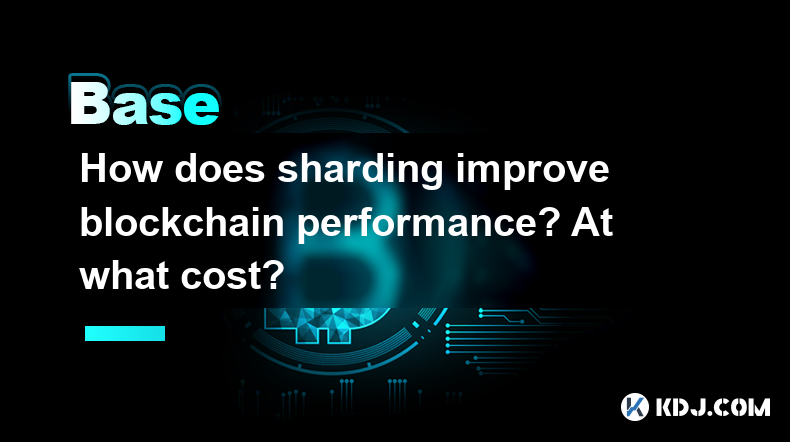
Sharding is a technique used in blockchain technology to enhance the performance and scalability of a network. By dividing the blockchain into smaller, manageable pieces called shards, the system can process multiple transactions in parallel, significantly increasing throughput. However, this approach comes with its own set of challenges and costs. In this article, we will explore how sharding improves blockchain performance and the associated costs.
What is Sharding in Blockchain?
Sharding is a method of partitioning a blockchain's database into smaller segments, known as shards. Each shard contains a subset of the blockchain's data and can process transactions independently. This allows for parallel processing, which can dramatically increase the number of transactions the network can handle per second.
In traditional blockchains like Bitcoin and Ethereum, every node on the network must process and store every transaction, which can lead to bottlenecks and scalability issues. Sharding addresses these problems by allowing different nodes to focus on different shards, thereby distributing the workload more efficiently.
How Does Sharding Improve Blockchain Performance?
Sharding improves blockchain performance primarily through two mechanisms: parallel processing and reduced node workload.
Parallel Processing: By dividing the blockchain into shards, each shard can process transactions independently. This means that multiple transactions can be processed simultaneously across different shards, leading to a higher transaction throughput. For example, if a blockchain is divided into 100 shards, it can potentially process 100 times more transactions per second than a non-sharded blockchain.
Reduced Node Workload: In a sharded blockchain, nodes are responsible for processing and storing data from only a subset of the network. This reduces the computational and storage requirements for individual nodes, allowing more nodes to participate in the network. A larger number of nodes can lead to a more decentralized and resilient network.
The Costs of Implementing Sharding
While sharding offers significant performance improvements, it also introduces several challenges and costs that need to be carefully managed.
Increased Complexity: Implementing sharding adds complexity to the blockchain architecture. Developers must design systems to manage cross-shard communication and ensure data consistency across different shards. This requires sophisticated protocols and can lead to increased development and maintenance costs.
Security Risks: Sharding can potentially introduce new security vulnerabilities. Since each shard operates independently, a malicious actor might attempt to compromise a single shard to disrupt the entire network. To mitigate this risk, sharded blockchains often implement additional security measures, such as cross-shard validation and random shard assignment.
Interoperability Challenges: Ensuring seamless interaction between different shards is crucial for the overall functionality of the network. This requires robust protocols for transaction routing and data synchronization. Developing and maintaining these protocols can be resource-intensive.
Resource Requirements: While sharding reduces the workload on individual nodes, it also requires additional resources to manage the overall network. For example, a sharded blockchain might need more sophisticated consensus mechanisms and additional infrastructure to handle cross-shard transactions.
Examples of Sharding in Practice
Several blockchain projects have implemented or are exploring sharding to improve their performance.
Ethereum 2.0: Ethereum is transitioning to a new version known as Ethereum 2.0, which includes a sharding mechanism. Ethereum's sharding will divide the network into 64 shards, each capable of processing its own set of transactions. This is expected to significantly increase Ethereum's transaction throughput and reduce congestion on the network.
Zilliqa: Zilliqa is a blockchain platform that has already implemented sharding. It uses a technique called shard-based parallel processing to achieve high transaction rates. Zilliqa's network is divided into multiple shards, each processing transactions independently, which allows the platform to handle thousands of transactions per second.
Near Protocol: Near Protocol is another blockchain project that uses sharding to improve scalability. It employs a technique called Nightshade, which divides the network into shards that can process transactions in parallel. Near Protocol's sharding approach is designed to support high throughput while maintaining decentralization and security.
The Trade-offs of Sharding
Implementing sharding involves balancing the benefits of increased performance against the associated costs and challenges. The key trade-offs include:
Performance vs. Complexity: While sharding can significantly improve transaction throughput, it also increases the complexity of the blockchain system. This complexity can lead to higher development and maintenance costs.
Scalability vs. Security: Sharding can enhance scalability by allowing more transactions to be processed in parallel. However, it also introduces new security risks that must be managed through additional measures, which can be resource-intensive.
Decentralization vs. Efficiency: Sharding can reduce the workload on individual nodes, potentially allowing more nodes to participate in the network and increasing decentralization. However, managing a sharded network requires additional infrastructure and resources, which can impact efficiency.
Frequently Asked Questions
Q: Can sharding be implemented on any blockchain?
A: Sharding can be implemented on many blockchains, but it requires significant changes to the underlying architecture. Not all blockchains are designed to support sharding, and implementing it can be complex and resource-intensive. Projects like Ethereum and Zilliqa have successfully implemented sharding, but others may face technical challenges in doing so.
Q: How does sharding affect the decentralization of a blockchain?
A: Sharding can potentially enhance decentralization by reducing the workload on individual nodes, allowing more nodes to participate in the network. However, managing a sharded network requires additional infrastructure and resources, which can impact the overall decentralization if not carefully managed.
Q: What are the main challenges in implementing sharding?
A: The main challenges in implementing sharding include increased complexity, security risks, interoperability issues, and resource requirements. Developers must design robust protocols to manage cross-shard communication and ensure data consistency, while also implementing additional security measures to protect the network from potential vulnerabilities.
Q: How does sharding compare to other scalability solutions like layer 2 scaling?
A: Sharding and layer 2 scaling are both approaches to improving blockchain scalability, but they operate at different levels. Sharding involves partitioning the main blockchain into smaller segments to process transactions in parallel, while layer 2 scaling involves offloading transactions to secondary networks or protocols. Sharding can offer higher throughput but is more complex to implement, while layer 2 solutions can be easier to deploy but may not achieve the same level of scalability.
Disclaimer:info@kdj.com
The information provided is not trading advice. kdj.com does not assume any responsibility for any investments made based on the information provided in this article. Cryptocurrencies are highly volatile and it is highly recommended that you invest with caution after thorough research!
If you believe that the content used on this website infringes your copyright, please contact us immediately (info@kdj.com) and we will delete it promptly.
- Coinbase International Exchange and Coinbase Advanced Will Introduce Support for BNB Perpetual Futures
- 2025-04-07 15:25:11
- Tether Reaches 400M Users, CEO Paolo Ardoino Envisions a 'Stablecoin Multiverse'
- 2025-04-07 15:25:11
- WAL, the native token of the Walrus protocol, is generating a buzz
- 2025-04-07 15:20:14
- WAL, the native token of the Walrus protocol, is generating a buzz after the launch of its mainnet and airdrop
- 2025-04-07 15:20:14
- SUI Has Shown Signs of Recovery, and the Crypto Token's Price Is Trading at $2.65
- 2025-04-07 15:15:12
- Did you know In-N-Out has its own speciality coin? This Redditor bought a lady's meal to get their hands on one
- 2025-04-07 15:15:12
Related knowledge
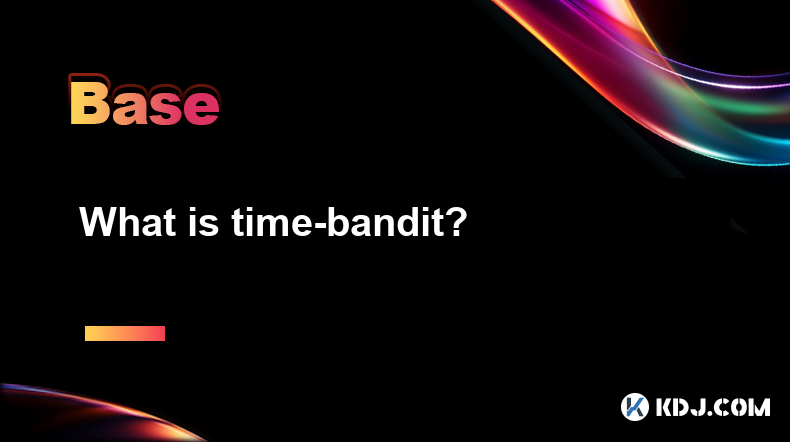
What is time-bandit?
Apr 07,2025 at 03:00pm
What is Time-Bandit?In the world of cryptocurrency, the term time-bandit refers to a specific type of attack that targets blockchain networks, particularly those that use Proof of Work (PoW) consensus mechanisms. This attack exploits the time it takes for a block to be mined and added to the blockchain, allowing malicious actors to manipulate the networ...
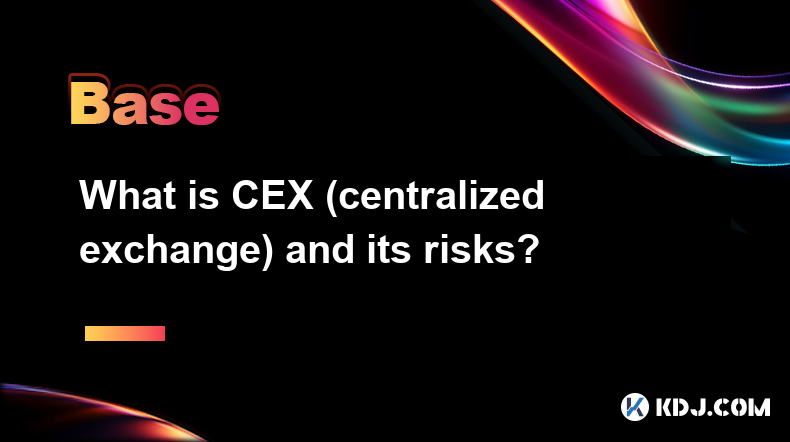
What is CEX (centralized exchange) and its risks?
Apr 07,2025 at 02:28pm
A Centralized Exchange (CEX) is a platform where users can trade cryptocurrencies for other assets, including other cryptocurrencies, fiat money, or derivatives. These exchanges are operated by a central authority or company that manages the platform, holds users' funds, and facilitates transactions. Some of the most well-known CEXs include Binance, Coi...
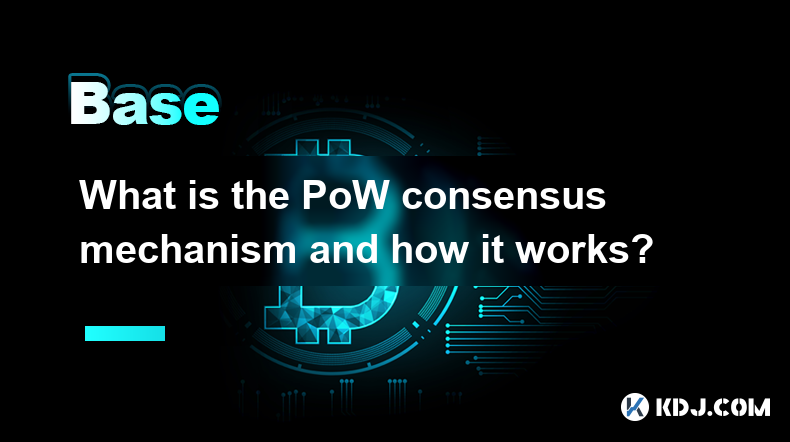
What is the PoW consensus mechanism and how it works?
Apr 07,2025 at 03:36pm
The Proof of Work (PoW) consensus mechanism is a fundamental component of many blockchain networks, most notably Bitcoin. It serves as a method to secure the network and validate transactions in a decentralized manner. In this article, we will explore what PoW is, how it functions, and its significance within the cryptocurrency ecosystem. What is Proof ...
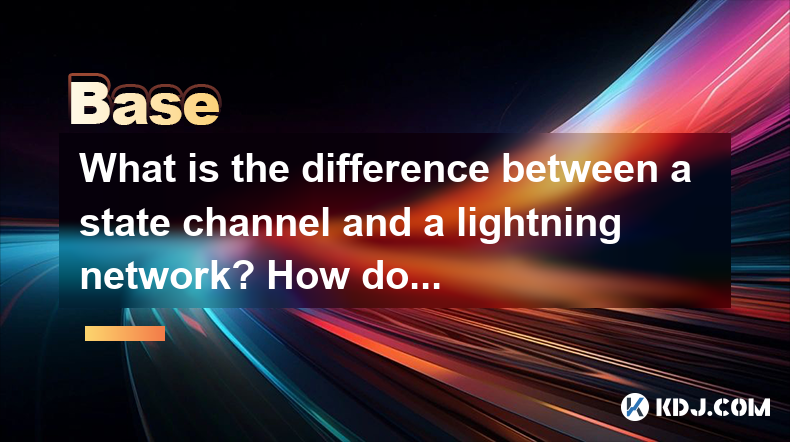
What is the difference between a state channel and a lightning network? How do they improve transaction efficiency?
Apr 05,2025 at 05:21pm
State channels and the Lightning Network are two significant technologies within the cryptocurrency ecosystem aimed at improving transaction efficiency on blockchain networks. Both solutions address the scalability issues of blockchain systems, particularly in handling a high volume of transactions quickly and with low fees. However, they operate differ...
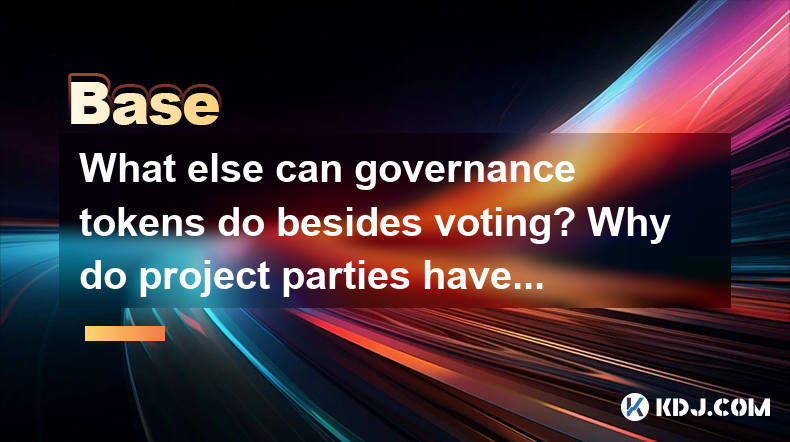
What else can governance tokens do besides voting? Why do project parties have to issue one?
Apr 06,2025 at 06:42pm
Governance tokens have become a pivotal element in the decentralized ecosystem, serving functions that extend far beyond the simple act of voting. While voting is a crucial aspect of these tokens, allowing token holders to influence the direction and decisions of a project, there are numerous other roles that governance tokens play within the cryptocurr...

Why is the oracle called the bridge between blockchain and the real world?
Apr 04,2025 at 04:00am
The concept of an oracle in the cryptocurrency and blockchain world is crucial for understanding how these decentralized systems interact with external data. The oracle is often referred to as the bridge between blockchain and the real world because it serves as a vital intermediary that fetches, verifies, and transmits off-chain data to the on-chain en...

What is time-bandit?
Apr 07,2025 at 03:00pm
What is Time-Bandit?In the world of cryptocurrency, the term time-bandit refers to a specific type of attack that targets blockchain networks, particularly those that use Proof of Work (PoW) consensus mechanisms. This attack exploits the time it takes for a block to be mined and added to the blockchain, allowing malicious actors to manipulate the networ...

What is CEX (centralized exchange) and its risks?
Apr 07,2025 at 02:28pm
A Centralized Exchange (CEX) is a platform where users can trade cryptocurrencies for other assets, including other cryptocurrencies, fiat money, or derivatives. These exchanges are operated by a central authority or company that manages the platform, holds users' funds, and facilitates transactions. Some of the most well-known CEXs include Binance, Coi...

What is the PoW consensus mechanism and how it works?
Apr 07,2025 at 03:36pm
The Proof of Work (PoW) consensus mechanism is a fundamental component of many blockchain networks, most notably Bitcoin. It serves as a method to secure the network and validate transactions in a decentralized manner. In this article, we will explore what PoW is, how it functions, and its significance within the cryptocurrency ecosystem. What is Proof ...

What is the difference between a state channel and a lightning network? How do they improve transaction efficiency?
Apr 05,2025 at 05:21pm
State channels and the Lightning Network are two significant technologies within the cryptocurrency ecosystem aimed at improving transaction efficiency on blockchain networks. Both solutions address the scalability issues of blockchain systems, particularly in handling a high volume of transactions quickly and with low fees. However, they operate differ...

What else can governance tokens do besides voting? Why do project parties have to issue one?
Apr 06,2025 at 06:42pm
Governance tokens have become a pivotal element in the decentralized ecosystem, serving functions that extend far beyond the simple act of voting. While voting is a crucial aspect of these tokens, allowing token holders to influence the direction and decisions of a project, there are numerous other roles that governance tokens play within the cryptocurr...

Why is the oracle called the bridge between blockchain and the real world?
Apr 04,2025 at 04:00am
The concept of an oracle in the cryptocurrency and blockchain world is crucial for understanding how these decentralized systems interact with external data. The oracle is often referred to as the bridge between blockchain and the real world because it serves as a vital intermediary that fetches, verifies, and transmits off-chain data to the on-chain en...
See all articles





















































































